The Chain Bridge (Széchenyi Lánchíd) is one of the most iconic landmarks of Budapest, spanning the Danube River and connecting the Buda and Pest sides of the city. It stands as a symbol of unity and architectural heritage for the Hungarian capital.
Opened on November 20, 1849, the bridge was the first permanent stone bridge to cross the Danube in Hungary, marking a key milestone in the country’s modernization and economic revival. Its construction was a significant feat, not only engineering-wise but also symbolically, as it united two distinct parts of the city.
Today, the Chain Bridge remains a cultural and historical emblem, illuminated at night to highlight its majestic design. It continues to serve as an essential pedestrian and vehicular link over the river, attracting both locals and tourists who marvel at its beauty and historical significance.
History of the Chain Bridge
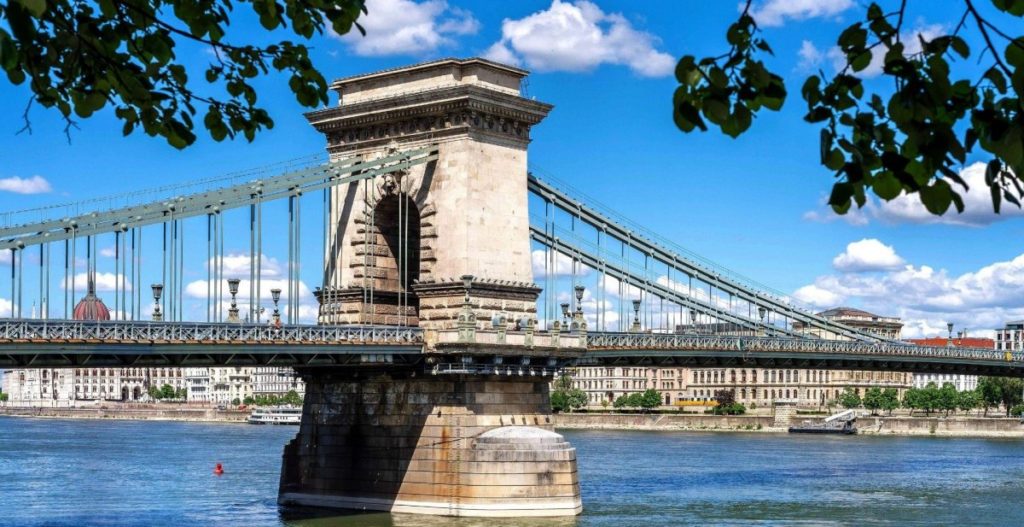
The Need to Unite Buda and Pest
In the early 19th century, Buda and Pest, although part of the same growing urban area, were separated by the vast and often treacherous Danube River. The river’s strong currents and seasonal ice floes made ferry crossings unreliable, limiting communication and trade between the two cities. Recognizing the importance of a permanent crossing, Count István Széchenyi, a leading reformist statesman, proposed building a bridge to unite the two halves of what would eventually become modern Budapest.
Széchenyi’s Vision and the Bridge-Building Society
Count Széchenyi, often referred to as the “Greatest Hungarian,” was instrumental in pushing for the construction of the bridge. He first proposed the idea in 1820 and later founded the Hungarian Bridge-Building Society in 1832 to manage the project. Széchenyi’s vision was to create a bridge that would not only facilitate trade but also symbolize the country’s modernization and progress. With financial support from wealthy investors, including philanthropist Georgios Sinas, Széchenyi was able to secure the resources needed to bring the project to life.
Construction: 1842–1849
- Engineering Leadership: The design and construction were led by the Scottish engineer Adam Clark, who was tasked with overseeing the bridge’s technical aspects.
- Design and Materials: The bridge featured a suspension design, utilizing massive iron chains. The iron for the chains was sourced from Britain, and the stone pillars were constructed in Hungary. The engineering challenges were immense, as the Danube River had to be crossed without disrupting the river’s busy traffic or navigation.
- Timeline: Construction officially began in 1842, and the bridge was completed in 1849, taking seven years to finish. The Chain Bridge was opened on November 20, 1849, becoming the first permanent stone-and-iron bridge over the Danube River and one of the longest suspension spans in Europe at the time.
Naming the Chain Bridge
The bridge was named “Lánchíd” (Chain Bridge) because of the distinctive wrought-iron chains that suspended the roadway. These chains became one of the most recognizable features of the bridge, symbolizing the engineering ingenuity behind its construction. Although there was some early debate about naming the bridge after Széchenyi, it was commonly referred to as the Chain Bridge. In 1915, the name was officially changed to “Széchenyi Lánchíd” in honor of the visionary behind its creation.
Historical and Cultural Significance
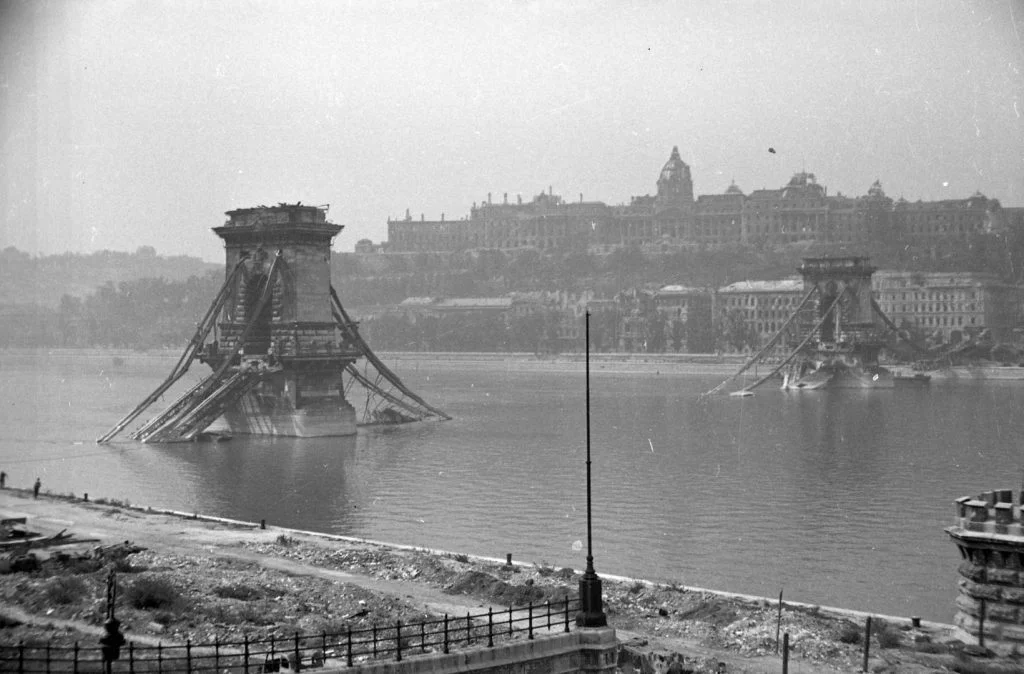
The Chain Bridge has served not only as a vital transport link but also as a powerful symbol of Hungary’s national identity, resilience, and unity. From its role in the 19th-century revolutions through its dramatic destruction in World War II and triumphant reconstruction, the bridge embodies the political and cultural transformations that have shaped Budapest. Its chains, towers, and lions stand as monuments to the city’s endurance, while its span across the Danube continues to remind Hungarians and visitors alike of Buda and Pest’s inseparable bond.
A Symbol of National Transformation
The Chain Bridge has witnessed, and often embodied, Hungary’s most pivotal political moments. Completed just months after the 1848-49 Hungarian Revolution, it quickly became associated with the nation’s push for independence and modernization. Over the years, it served as a backdrop for political demonstrations, public gatherings, and national celebrations, including the Austro-Hungarian Compromise of 1867, reinforcing its role as a stage for Hungary’s evolving identity.
Uniting Buda and Pest
Beyond its practical function, the bridge carried immense symbolic weight as the first permanent connection between Buda and Pest. This physical link laid the foundation for the unification of the two cities, along with Óbuda, in 1873, creating the capital, Budapest. The bridge thus came to represent not just infrastructure, but national cohesion and urban integration.
War Damage and Reconstruction
In January 1945, near the end of World War II, German forces destroyed the Chain Bridge during their retreat, leaving only the stone towers intact. This act of war severed not only the city’s physical connection but also a powerful national symbol. Reconstruction began in 1947, led by engineer Pál Sávoly, who incorporated salvaged original materials where possible. The restored bridge reopened on November 20, 1949, exactly 100 years after its first inauguration, restoring both a key crossing and a cherished emblem of Hungary’s resilience.
The Tongueless Lions of the Chain Bridge
Among the many architectural marvels of Budapest, the Széchenyi Chain Bridge stands as one of the city’s most iconic landmarks. Opened in 1849, it was the first permanent bridge to connect Buda and Pest across the Danube River. While its historic and symbolic significance is well known, the bridge is also wrapped in a peculiar urban legend involving the four stone lions that guard its entrances.
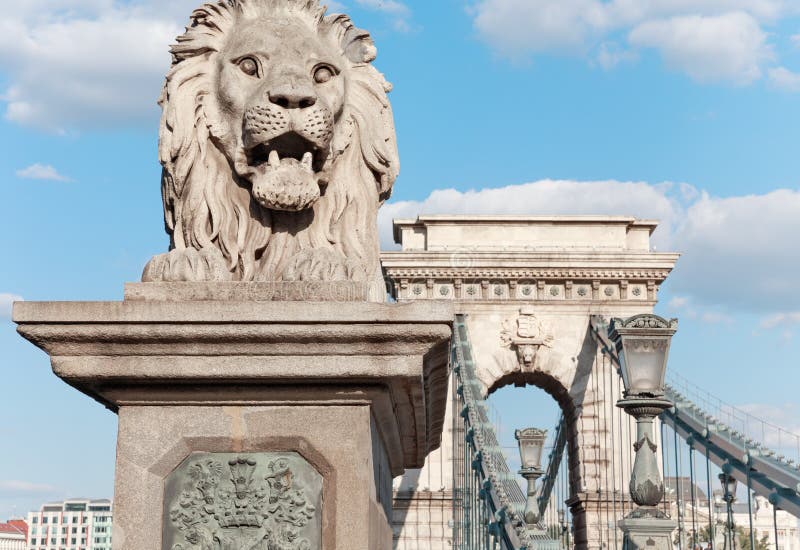
Installed in 1852 and sculpted by János Marschalkó, these imposing lion statues quickly became the subject of citywide gossip. According to local legend, a keen-eyed child once pointed out a startling omission:
“The lions have no tongues!”
Word spread, and the supposed oversight became a source of ridicule. The story takes a dramatic turn with the claim that Marschalkó, devastated by the humiliation of such a glaring mistake, threw himself into the Danube in despair.
However, the truth is far less tragic — and far more interesting. In reality, the lions do have tongues, but they are not easily visible from ground level due to the angle and design of the sculptures. As for the sculptor, Marschalkó lived on for many years after completing the lions, continuing his artistic career.
Despite being a myth, the tale of the tongueless lions has become a beloved piece of Budapest folklore, adding a touch of drama and whimsy to one of the city’s most photographed monuments. Whether believed or not, it’s a story that continues to captivate locals and tourists alike.
Design and Architecture
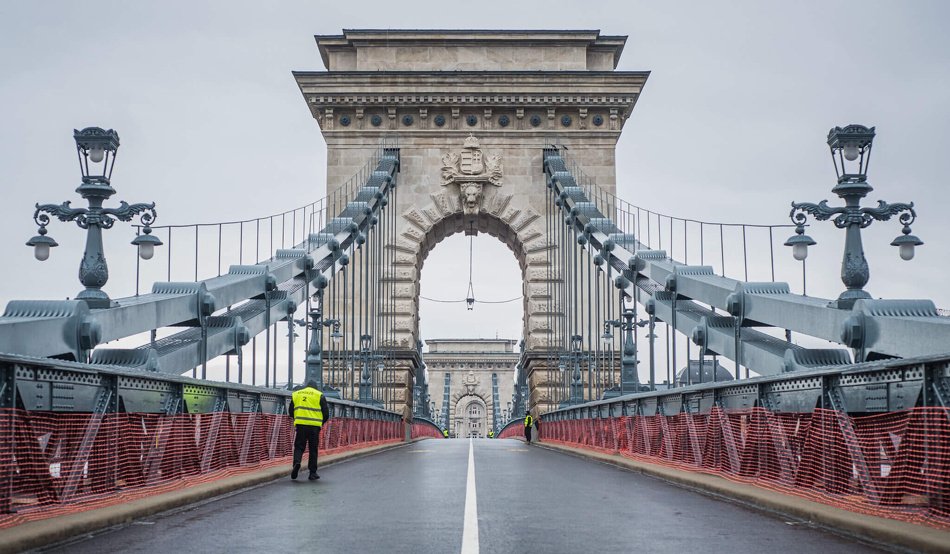
Suspension System
The Chain Bridge employs a classic chain-suspension design in which flat wrought-iron links carry the entire deck load, minimizing the need for mid-river piers. Inspired by William Tierney Clark’s earlier Marlow Bridge over the Thames, the span was scaled up for the Danube crossing under his design and supervised locally by Adam Clark.
Dimensions and Materials
Measuring approximately 375 m in total length with a central span of 202 m, the bridge deck is 14.8 m wide, accommodating two lanes of vehicular traffic and pedestrian walkways on either side. Its primary structural elements consist of British-manufactured wrought-iron chains anchored into massive stone abutments, while the roadway rests on transverse iron beams capped by wooden planking.
Towers and Architectural Ornamentation
Flanking each end of the suspension span are imposing Neo-Classical stone towers, whose rusticated masonry and carved details reflect mid-19th-century aesthetics. Cast-iron embellishments—ranging from rosettes to stylized balustrades—further enrich the bridge’s visual character, reinforcing its status as both an engineering marvel and an urban landmark.
Structural Innovations
By suspending the deck on continuous flat chains rather than individual rods, the design achieved a smoother load distribution and reduced maintenance compared to earlier suspension bridges. This innovation allowed for the long 202 m central span—one of Europe’s widest at the time—while ensuring the structure’s stability against the Danube’s currents and seasonal ice floes.
The Chain Bridge Today
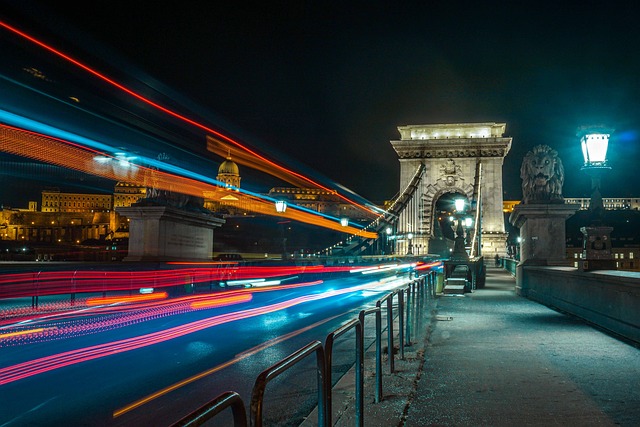
The Széchenyi Chain Bridge remains one of Budapest’s most visited landmarks, drawing millions of visitors annually who come to admire its historic structure, capture iconic photographs, and enjoy leisurely strolls along the Danube waterfront. Its central location between Buda and Pest makes it a natural starting point for a walking tour of the city’s top attractions. Visitors often combine a bridge crossing with a guided boat cruise departing from nearby docks, offering a different perspective of the bridge’s architecture and the surrounding panorama.
Premier Tourist Attraction
The Chain Bridge ranks alongside the Parliament Building and Buda Castle as a must-see site in Budapest itineraries, featured on nearly every major travel guide. Daily guided tours—both on foot and by bicycle—routinely include the bridge, underscoring its importance as a focal point of urban exploration. At night, illumination of its suspension chains and stone towers enhances its visual appeal, making it one of the most photographed landmarks in Europe.
Scenic Vantage Point
From its pedestrian walkways, the bridge affords sweeping views of the Hungarian Parliament Building framed against the Pest skyline. Looking toward Buda, the Castle Hill panorama unfolds with the Matthias Church, Fisherman’s Bastion, and Royal Palace visible atop the hill. Photographers flock to sunrise and sunset vantage points on the bridge for unobstructed shots of the Danube flanked by grand architectural monuments.
Hub of Activity
At either end of the bridge, street musicians, portrait artists, and souvenir vendors create a lively atmosphere that blends historic grandeur with local culture. Nearby cafés and bistros, many with outdoor seating, offer views of the bridge while serving traditional Hungarian pastries and coffee. Seasonal events such as summer open-air concerts and holiday light festivals frequently center on the bridge plaza, drawing both residents and tourists to celebrate Budapest’s rich heritage

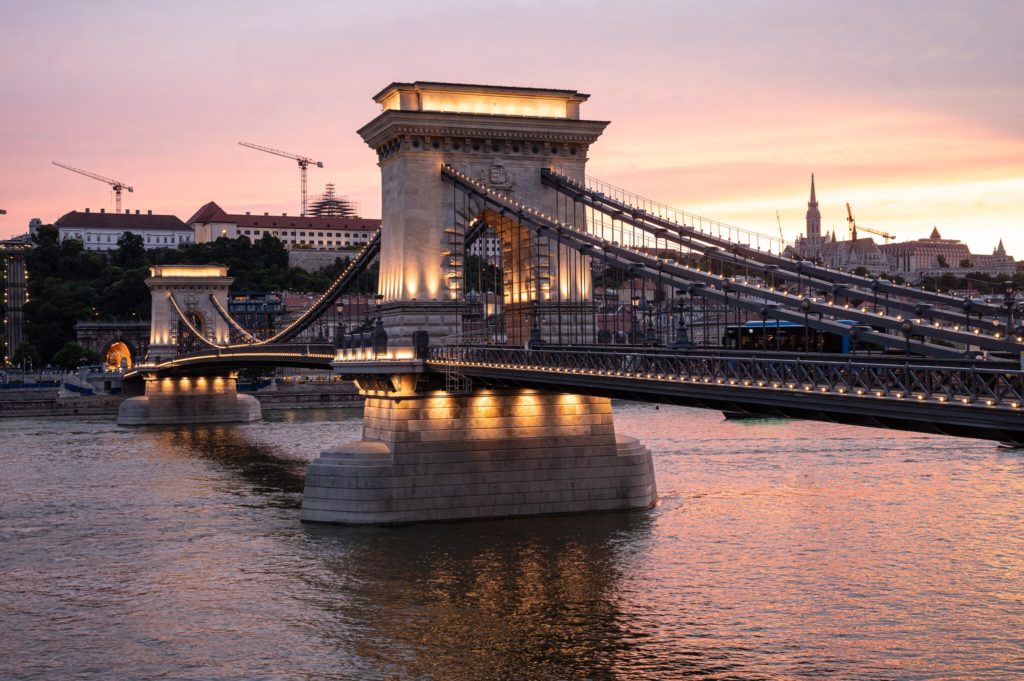
Comments are closed.